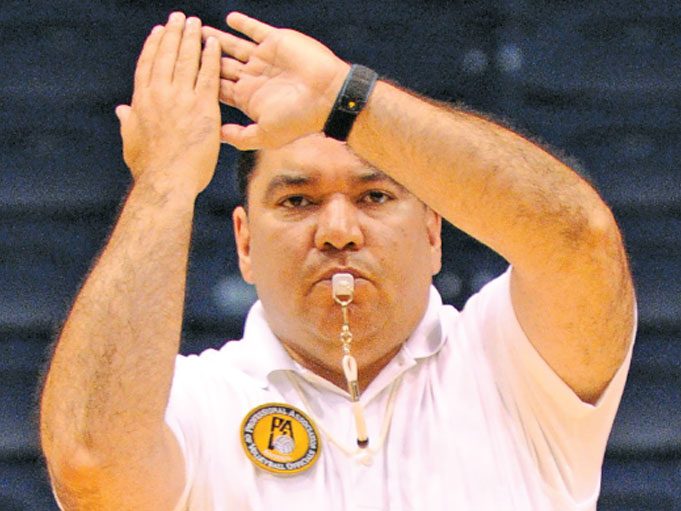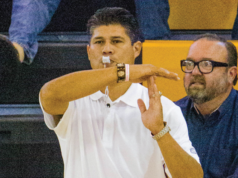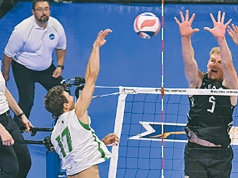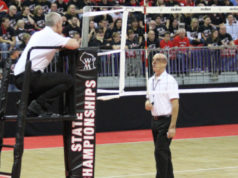Very early in my officiating career, I received a call to officiate a local collegiate match. My partner was someone I had not worked with previously. While I thought I was very well trained, nothing had prepared me for what I call my worst nightmare as an official. It almost made me give up officiating altogether.
The things that I remember most about that match are insignificant when I think about them today. However, I’m sure I will never forget how awful I felt after the match and especially after the postmatch conference. I particularly will never forget the last summons of the first referee, when I was told to tell the home coach, “If she doesn’t take control of the fans, I am going to clear the gym and only the players and coaches will be left.” And later the coach saying that the first referee “will never officiate a match at this college again!”
It was a thoroughly unpleasant experience, one for which I felt some of the responsibility — without really knowing why.
Granted, that match happened many years ago, but it helps set the stage for this article, raising the question about our training of officials today. There are many articles and training videos that emphasize the first referee regarding control of the match. We stress the first referee’s responsibility for ball handling consistency, professionalism and much more. However, what about the referee across the court? Are we adequately preparing our second referees to handle that position? Are they effectively trained to deal with not just the routine duties, but the unexpected?
Past second referee training has focused on watching the net and center line like a hawk while transitioning from side to side. We’ve stressed checking lineups, getting substitutes in and out of the game quickly, administering timeouts, watching the libero come and go, tracking the setters and watching for alignment issues. Seems like a lot of responsibility. However, have we taught the second referee how to take care of those duties and expand their focus to encompass more?
For example, what about the bang-bang play at the net on the second referee’s side? Who made contact last? How about the ball that possibly is over/outside of the antenna on the second referee’s side? Have we really shown referees how to get in a good position to see those situations and help the first referees know what just happened? What do we mean by “looking through the net”? What should the second referee do when the line judge is frantically waving a flag because the ball passes outside the antenna but goes unnoticed by the first referee, who then allows play to continue?
In situations where line judges are inexperienced and not seeing touches off the block, have we taught the second referee to work even harder to help with those decisions? And when there is a pancake by a player and the first referee’s sight line is clearly blocked, have we taught second referees that helping is critical? The second referee must be aware when the libero sets the ball with finger action on or in front of the attack line. But how does the second referee indicate to the first referee what just happened? Sure, we teach officials to discuss those things prematch, but is that enough? Our training also includes knowing how to keep score, but does it include how to quickly identify what is wrong with the score sheet, so it doesn’t take 10-15 minutes to sort out the problem?
Oh, yes — coaches, disruptive players and unruly fans. Second referees are expected to be aware of and involved with them as well. But how? We give referees reading materials and we even talk about what to say in those situations. But do we arrange preseason scrimmages and/or hands-on situations to train the second referee prior to the regular season? Are we able to train referees how to think on their feet, how to choose the correct words to use to defend and protect the first referee’s controversial calls, and how to defuse the situation and restore order? Do we teach how to warn, but not threaten? If there is a misapplied rule, can the second referee handle damage control?
Many of our training techniques are based on “on-the-job training,” hoping referees can figure it out as it happens in a live match.
Many players today are playing volleyball nearly year-round, and the skill level of those players has increased significantly. Shouldn’t we also move the level of training for second referees to the next level? Many times, we say “with experience” an individual will get better at handling second referee situations — and typically we all do. But perhaps we should bolster training to stay up with and ahead of the skill level of the players. We need to develop second referee training that is more than the X’s and O’s of officiating volleyball, and then figure out how to measure the effectiveness of our training. Maybe we are adequately training our second referees. However, it’s time we take an inventory of how we approach second referee training, roll up our sleeves, and get down to really educating and preparing them. We should not settle for adequate.
After all, if it is a partnership between the first and second referees, shouldn’t the focus on training be equal?
What's Your Call? Leave a Comment:
Note: This article is archival in nature. Rules, interpretations, mechanics, philosophies and other information may or may not be correct for the current year.
This article is the copyright of ©Referee Enterprises, Inc., and may not be republished in whole or in part online, in print or in any capacity without expressed written permission from Referee. The article is made available for educational use by individuals.


















